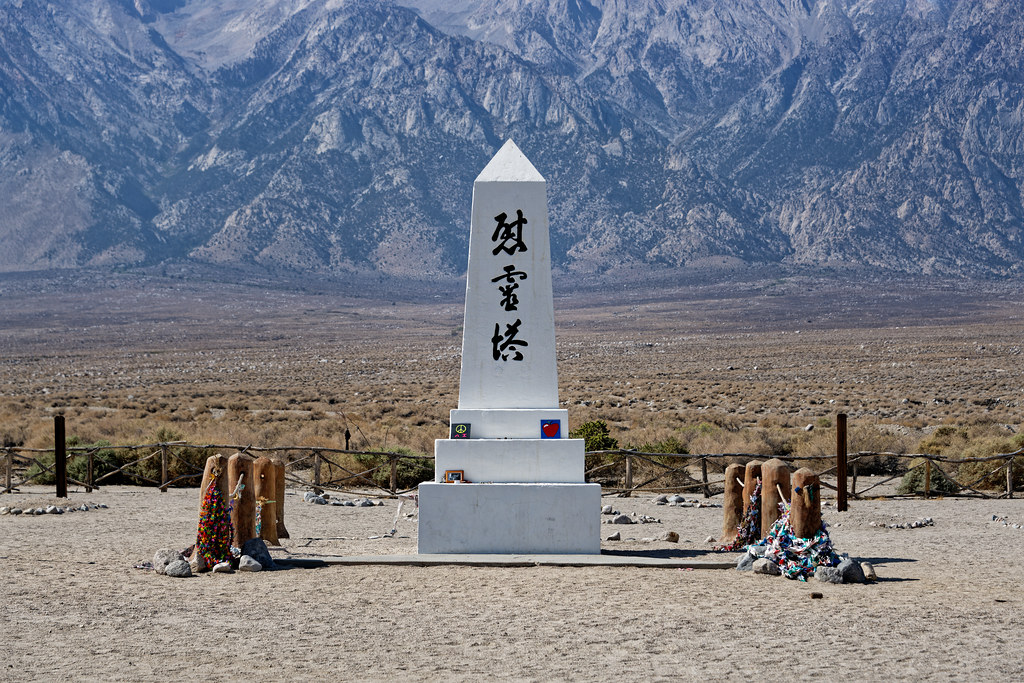#National Alabama Day
Explore tagged Tumblr posts
Text

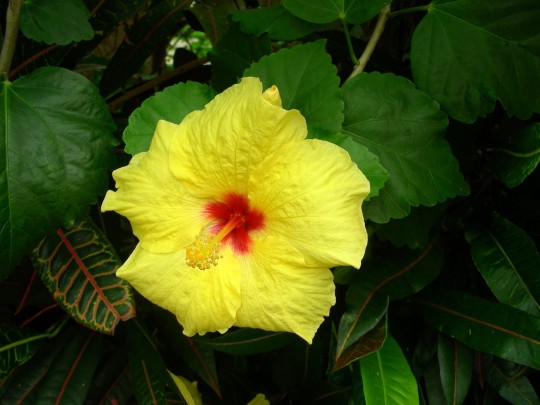

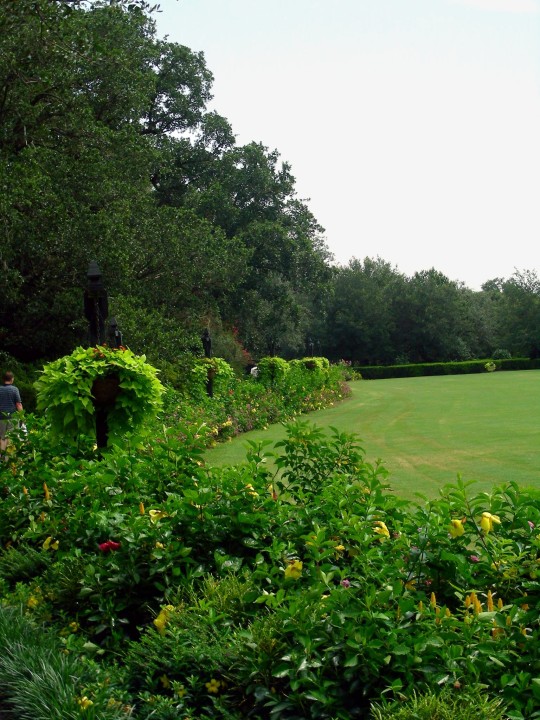

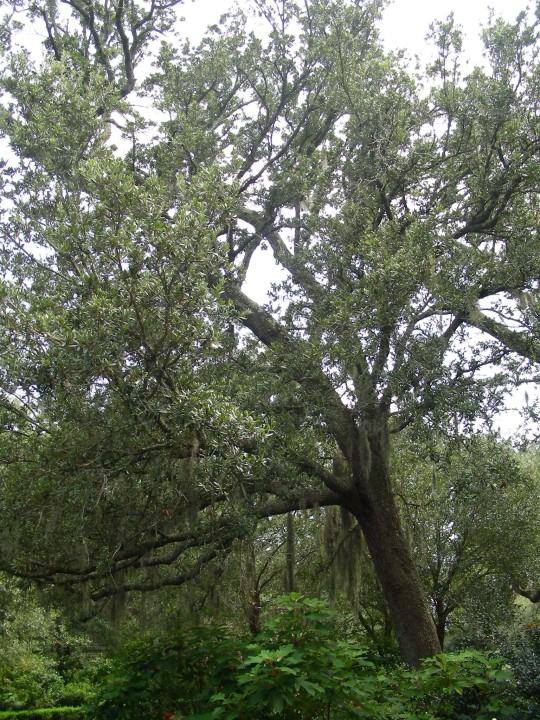







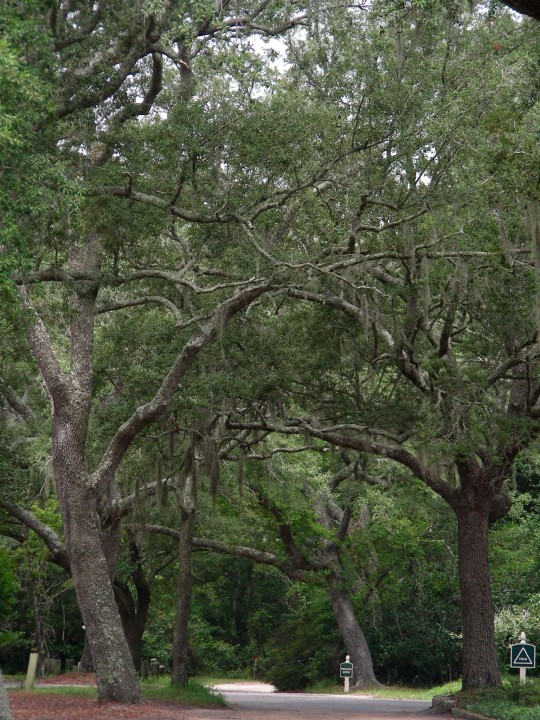

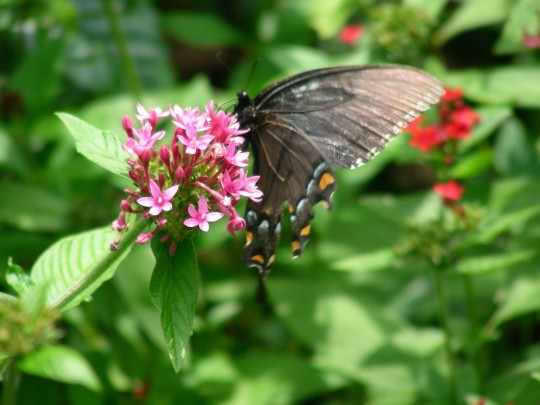


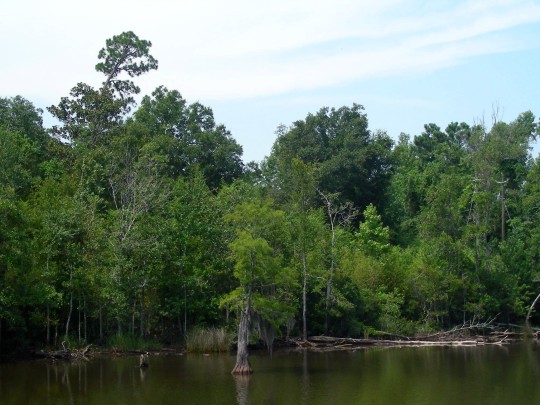
Alabama became the 22nd U.S. state on December 14, 1819.
National Alabama Day
National Alabama Day celebrates the rich culture and contributions of the state known as the Heart of Dixie.
It honors Alabama’s significant role in the nation, from its natural beauty and historical landmarks to its vibrant traditions and unique cuisine.
This day encourages everyone to appreciate what makes Alabama special, fostering a sense of state pride and unity.
The day recognizes Alabama’s impact on American history and culture. It highlights the state’s importance in events like the Civil Rights Movement and showcases its role in shaping the nation.
Celebrating this day also means acknowledging Alabama’s natural wonders, such as the Appalachian Mountains and Gulf Coast, along with its famous southern hospitality and delicious dishes like barbecue and fried green tomatoes.
National Alabama Day is a time for residents and visitors to explore the state’s diverse attractions and enjoy community gatherings.
People can visit national parks, attend local music festivals, and indulge in traditional Alabama foods.
These activities celebrate the state’s heritage and bring communities together, making it a memorable and cherished occasion for all.
History of National Alabama Day
National Alabama Day celebrates Alabama’s admission to the Union as the 22nd state. This day acknowledges the state’s journey from being part of the Mississippi Territory to becoming its entity.
The process started with a constitutional convention in Huntsville in July 1819, leading to statehood on December 14 of the same year. The first governor was William Wyatt Bibb, and the initial capital was in the town of Cahawba. While Alabama Day was celebrated unofficially all over the state starting in 1903, the state officially declared the day in 1923.
The celebration of this day reflects on Alabama’s significant historical milestones and contributions to the nation. Alabama played a crucial role in events like the Civil Rights Movement, which began in Montgomery.
This period marked important strides towards equality and justice in the United States, making the state a central figure in American history.
National Alabama Day also celebrates the state’s rich cultural heritage, including its music, cuisine, and natural beauty.
From southern hospitality to delicious barbecue and sweet tea, Alabama offers a unique blend of traditions that are cherished nationwide.
This day serves as a reminder of the state’s enduring spirit and its importance in the tapestry of American culture.
How to Celebrate National Alabama Day
Celebrate National Alabama Day with these fun and engaging activities. Each suggestion offers a unique way to appreciate Alabama’s heritage, natural beauty, and cultural richness.
Dive into History
Visit historical sites to explore Alabama’s rich past. Check out the Civil Rights Memorial in Montgomery. Tour the USS Alabama Battleship Memorial Park in Mobile.
Dive into the tales these landmarks tell. They offer a fascinating glimpse into the state’s history.
Feast on Southern Delights
Cook up some Alabama specialties. Fire up the grill for some BBQ ribs. Whip up a batch of fried green tomatoes.
Don’t forget to try the famous Alabama white sauce. Enjoy a sweet ending with a slice of pecan pie. Your taste buds will thank you.
Enjoy the Great Outdoors
Take advantage of Alabama’s natural beauty. Hike through the Appalachian Mountains, lounge on the sandy beaches of the Gulf Coast, and explore underground caves.
Nature enthusiasts will find plenty to love in Alabama’s varied landscapes.
Attend Local Events
Join in the community festivities. Parades, music festivals, and street fairs are common. Enjoy traditional music and dance performances.
These events bring the vibrant culture of Alabama to life, and it’s a great way to experience local traditions firsthand.
Show Your State Pride
Wear Alabama colors and gear, decorate your home with the state flag, share fun facts about Alabama with friends, and celebrate the unique aspects of the Heart of Dixie.
It’s all about showing your love for this amazing state.
National Alabama Day FAQs
What unique role did Alabama play in the history of Mardi Gras?
Mobile, Alabama, hosted the first American Mardi Gras in 1703, predating New Orleans’ celebrations. The city continues this tradition with vibrant parades and festivities each year.
Is it true that Alabama was the birthplace of the windshield wiper?
Yes, in 1903, Mary Anderson from Alabama invented the first operational windshield wiper, enhancing driver visibility and safety.
How did Alabama contribute to the development of the 911 emergency system?
In 1968, Haleyville, Alabama, made the first-ever 911 call, pioneering the emergency response system now standard across the U.S.
What is Alabama’s official state dance, and how does it reflect the state’s culture?
The square dance is Alabama’s official state dance, highlighting the state’s rich traditions in folk music and community gatherings.
Did Alabama have a unique method of mail delivery that’s still in use today?
Yes, Magnolia Springs, Alabama, maintains the only year-round water-based mail delivery route in the U.S., with mail delivered by boat since 1915.
What is the significance of the Pine Burr Quilt in Alabama’s history?
The Pine Burr Quilt is Alabama’s official state quilt, recognized for its intricate design and cultural importance in the state’s quilting heritage.
How did Alabama’s constitution set a record?
Alabama’s state constitution, with over 300,000 words and 775 amendments, is the longest in the world, reflecting the state’s complex legal history.
What unique natural feature does Alabama possess regarding its waterways?
Alabama has more navigable waterways than any other U.S. state, totaling over 1,500 miles, which have been vital for transportation and commerce.
How did Alabama’s city of Fort Payne set a world record?
In 1989, Fort Payne built the world’s largest cake to celebrate its centennial, weighing over 128,000 pounds, though this record was later surpassed.
What is the story behind Alabama’s state motto?
Alabama’s state motto, “Audemus jura nostra defendere,” translates to “We dare defend our rights,” reflecting the state’s historical emphasis on sovereignty and self-determination.
Source
#Giant Swallowtail#Alabama#22nd US state#14 December 1819#US history#205th anniversary#insect#animal#original photography#nature#bayou#Bellingrath Gardens and Home#Mirror Lake#tree#flora#fauna#lawn#summer 2009#vacation#travel#road trip#flower#Spanish Moss#tourist attraction#landmark#landscape#National Alabama Day#NationalAlabamaDay#USA
3 notes
·
View notes
Text
It’s Election Time: Time Off to Vote, Political Activities, and Political Speech in the Workplace
With Election Day quickly approaching, it is the right time for employers to refresh themselves on the various protections that may exist for their employees when it comes to voting and other political activities. Below is an overview of employees’ rights related to voting and other political activities leave, as well as protections for political speech and activity both in and outside the…
#alabama#California#designated tax statuses#election day#employees#employers#Illinois#Maryland#National Labor Relations Act#New York#NLRA#political activities#political speech#Private Sector#Protections#State Board of Elections#tax-exempt#town hall meetings#voting leave#washington dc#Workplace
2 notes
·
View notes
Text


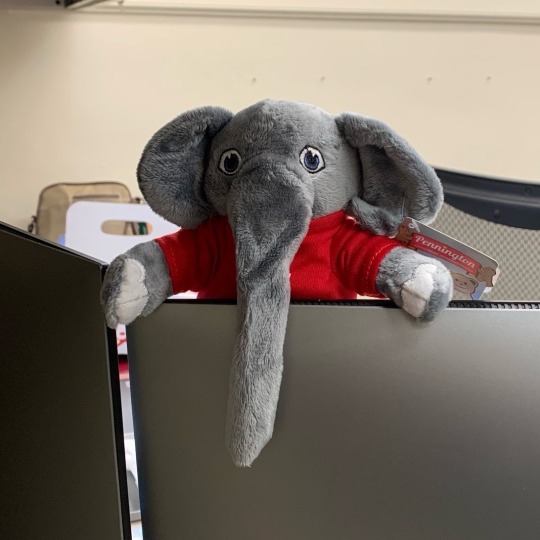

I didn’t realize until a few hours ago that yesterday was National Mascot Day. I still have yet to run into Big Al in person, so I’ll make do with some plushie pics (and a Funko). 🐘❤️
5 notes
·
View notes
Video
Manzanar Cemetery Monument by Mark Stevens Via Flickr: While taking in views of the landscape present in the Manzanar National Historic Site with a view looking to the southwest. This is of the Manzanar Cemetery and monument with a mountain backdrop of Mount Williamson.
#Alabama Hills#Alabama Hills National Scenic Area#Azimuth 246#Blue Skies#California and Oregon Road Trip#Concentration Camp#Day 2#Desert#Desert Landscape#Desert Mountain Landscape#Desert Plant Life#DxO PhotoLab 5 Edited#Hillsides#Internment Camp#Japanese American Incarceration#Japanese Internment Camp#Landscape#Landscape - Scenery#Looking SW#Manzanar#Manzanar Cemetery#Manzanar Cemetery Monument#Manzanar National Historic Site#Monument#Monument at Manzanar Cemetery#Mount Whitney Group#Mount Williamson#Mountain Peak#Mountains#Mountains in Distance
2 notes
·
View notes
Text

#4k#Flag of Birmingham#Alabama#American cities#3d Birmingham flag#USA#Birmingham flag#3d texture#Day of Birmingham#American national symbols#3d art#Birmingham#wallpapers
0 notes
Text

December 14:
Gingerbread Decorating Day
Halcyon Days
International Shareware Day
More Good Today Day
National Alabama Day
National Bouillabaisse Day
National Free Shipping Day
National Monkey Day
National Screwdriver Day
National Wreaths Across America Day
Roast Chestnuts Day
Sustainable Entrepreneurship Day
#monkey#alabama#gingerbread cookies#gingerbread house#halcyon#screwdriver#screwdrivers#entrepreneurship#bouillabaisse#national day#calendar#national days#fun day#holidays#December 14#December 14th
1 note
·
View note
Text

Emmanuel Littlejohn has been waiting for months to find out whether he will die on Thursday or get to live. It's been "the hardest thing I ever did."
Littlejohn, 52, is set to be executed for the shooting death of a convenience store owner during a robbery in Oklahoma City in 1992. If Republican Oklahoma Gov. Kevin Stitt declines to grant him clemency, Littlejohn will be the third inmate executed by the state this year and the 17th in the nation. He's also one of five men the U.S. is executing in a six-day period, and he's set to die just about eight hours before Alabama is expected to execute Alan Eugene Miller using nitrogen gas.
"I would say to the governor: Do what you think is the right thing," Littlejohn told USA TODAY in a recent interview.
Littlejohn has admitted to his role in the robbery but has maintained that his accomplice was the one to pull the trigger, not him.
"I accept responsibility for what I did but not what they want me to accept responsibility for," Littlejohn previously told USA TODAY. "They want me to accept that I killed somebody, but I haven't killed somebody."
In a rare move, the Oklahoma Pardon and Parole Board voted 3-2 to recommend clemency for Littlejohn, whose legal team argued that the evidence in the case was unclear, especially who the triggerman was.
Still, Republican Oklahoma Attorney General Gentner Drummond said afterward that his office would still be arguing against clemency to the governor, calling Littlejohn a "violent and manipulative killer."

If you’re outraged over Missouri murdering Marcellus Williams, then you should know Oklahoma is planning on carrying out an execution of Emmanuel Littlejohn this Thurs. at 10am.
Littlejohn was pardoned by the PPB. There’s still time to call the Governor: 405-521-2342.
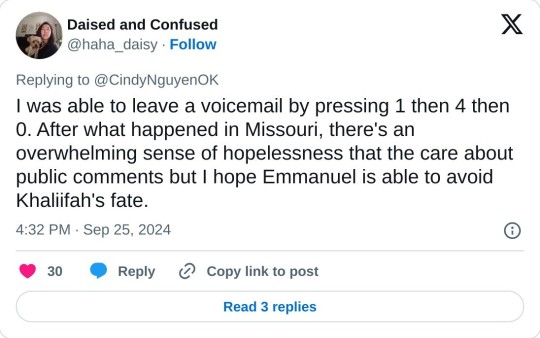
I was able to leave a voicemail by pressing 1 then 4 then 0. After what happened in Missouri, there's an overwhelming sense of hopelessness that the care about public comments but I hope Emmanuel is able to avoid Khaliifah's fate.
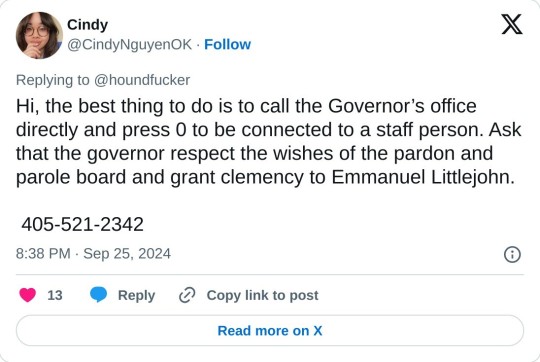
Hi, the best thing to do is to call the Governor’s office directly and press 0 to be connected to a staff person. Ask that the governor respect the wishes of the pardon and parole board and grant clemency to Emmanuel Littlejohn. 405-521-2342
10K notes
·
View notes
Text

THE ERA OF VANISHING HAS BEGUN
They are not arresting people. They are vanishing them.
Rumeysa Ozturk wasn’t read her rights. She wasn’t told why she was being detained. She was walking to break her fast in Somerville, Massachusetts when masked men in an unmarked SUV pulled up, took her phone, slapped on handcuffs, and dragged her into a vehicle like she was some kind of national security threat.
She’s a doctoral student. A Fulbright scholar. A trauma researcher. But in Donald Trump’s America, she fit the profile: Muslim, foreign-born, sympathetic to Palestinians.
Now she’s locked in a for-profit detention center in Louisiana, hundreds of miles from her lawyer, after a federal judge specifically said she wasn’t to be moved.
They moved her anyway. Because rules no longer apply to those with badges — real or fake.
A MOVEMENT BUILT ON CHAINS AND COWARDS
Alireza Doroudi is gone too.
He’s a doctoral student at the University of Alabama, born in Iran, studying mechanical engineering. No criminal record. No warning. Just scooped off the grid.
ICE refuses to say where he’s being held. No public charge has been announced. His only crime appears to be existing in the wrong body, from the wrong country, in the wrong era.
Mahmoud Khalil was next — a Columbia student, arrested for leading pro-Palestinian protests. Trump labeled him a “radical foreign Hamas sympathizer” on Truth Social. Days later, he was gone.
Jeanette Vizguerra was taken from her Target shift in Colorado, chained at the waist.
Alfredo “Lelo” Juarez, a farmworker organizer, was dragged from his car at dawn in Washington. His window was smashed by federal agents. His voice silenced.
These aren’t isolated incidents. These are deliberate acts of political intimidation.
They are testing the system — testing us — to see how many people they can disappear before we stop calling it democracy.
WHEN ICE IS A BADGE — AND A COSTUME
While the real ICE disappears scholars, organizers, and mothers, the fakes are circling like vultures.
In South Carolina, Sean-Michael Johnson posed as an ICE officer. He pulled over a van of Latino men, screamed slurs, jiggled their keys, and knocked a phone out of someone’s hand. “You’re going back to Mexico!” he shouted. He wasn’t an agent — but he played one with conviction.
In North Carolina, Carl Thomas Bennett used a fake badge to sexually assault a woman at a motel. He told her if she didn’t comply, he’d have her deported. He held up a counterfeit ID and pretended to be the state.
And in Philadelphia, a Temple University student in an “ICE” shirt tried to storm a dorm building with two accomplices. They were dressed for the part, intoxicated by the illusion of authority, emboldened by the climate.
This is what happens when the state makes cruelty a brand. When a badge becomes a fetish object. When the line between enforcement and cosplay disappears altogether.
THE WHOLE SYSTEM IS THE CRIME
Let’s stop pretending this is a coincidence.
This is a unified strategy. The Trump administration is using ICE like a personal strike force — targeting international students, protest leaders, organizers, and mothers with surgical precision.
They invoke secret designations. They bypass due process. They manufacture pretexts out of thin air and rely on the fog of bureaucracy to hide the blood on the floor.
The point isn’t law enforcement. The point is deterrence. Spectacle. Control.
This is what political cleansing looks like when it’s dressed up in the language of national security.
They’re showing the world that resistance has a cost — and the cost is your freedom, your voice, your visibility, your future.
SILENCE IS CONSENT. AND WE ARE LOUD.
There is no middle ground here. No fence to sit on. No neutral position when people are being kidnapped in the name of the state.
ICE doesn’t need your applause. It needs your silence. Every time a student vanishes and the media shrugs, every time a woman is cuffed and the public looks away, the machine gets stronger.
They are daring us to ignore it. They are counting on our numbness. They are betting that we’ll keep scrolling.
We cannot let them win.
This is not border policy. This is not visa enforcement. This is not safety.This is authoritarianism with a PowerPoint presentation.This is fascism disguised as formality.
This is the state stripping people from the land and pretending it’s order.
Let the record show:
They took people.
And we did not look away.
We saw it.
We named it.
We raised hell.
And we did not stop.
(I didn’t write this. Credit goes to Fear and Loathing: Closer to the Edge)
2K notes
·
View notes
Text
April 1st is Election Day
Are you feeling sick, depressed, angry, outraged and all the other bad feelings about Donald Trump and Elon Musk this March? WELL FUCKO! its time to get to work, the first major test of the resistance to Trump-Musk is this April first! two special elections to the US House in Florida and a Supreme Court election in Wisconsin.
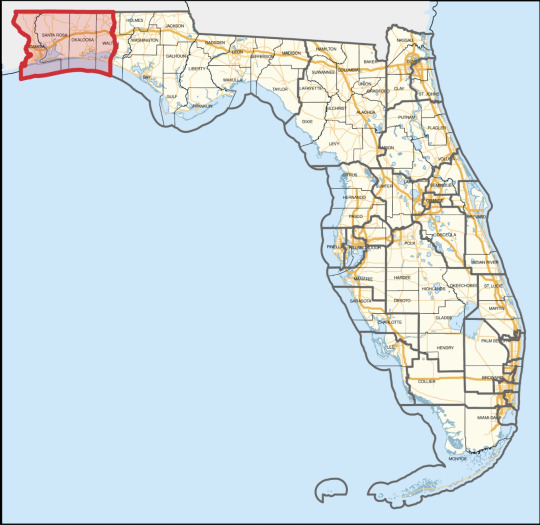

Florida's 1st and 6th Congressional Districts are having special elections on April 1st.
Right now the House of Representatives is 218 Republicans to 215 Democrats, flip these two seats, its 218-217, one vote away from being able to hold Trump and Musk accountable, and there are lots of Republican Congresspeople in their 70s and 80s.
The First Congressional District used to be well know sex criminal Matt Gaetz' district till he resigned hoping that'd mean The House wouldn't release a report on all his sex crimes, but the House released it anyways and Matt didn't get to be Trump's Attorney General. Any ways Trump endorsed Republican Jimmy Patronis, an ally of Ron DeSantis, which pretty much closed the Republican primary.
The Democrat is named Gay Valimont where ever you live in the US you can phone bank, if you live in Florida, or southern Georgia, Alabama, or Mississippi PLEASE! for the love of GOD! find time this month, one weekend to knock doors, and if you have a spare dollar, maybe don't buy something off Amazon? give it to the cause?
Give Volunteer Events
The Sixth Congressional District used to be Michael Waltz' seat till he resigned to be Trump's National Security Adviser, you know that gross bullying of Ukraine's President Zelensky? Waltz was definitely a part of planning that little show.
Any ways Trump endorsed well known lunatic Randy Fine to be the Republican nominee. Fine's not even in Congress and he's already threatening Democratic members he doesn't like.
The Democratic nominee is teacher Joshua Weil You can phone bank from anywhere and like I said if you live in Florida or southern Georgia please please give of your time and knock some doors. If you have a dollar to spare it'll go a long way.
Give Volunteer/Events
These will both be up hill fights, they are normally very safe Republican seats. However, these are not normal times, Musk and his DOGE are about as popular with the public as an untreated STI. Musk is firing veterans, and military spouses from their jobs, cutting back the VA, and Social Security, firing park rangers, air traffic controllers, nuclear weapon experts, civilian workers from the Defense department, Trump is purging the FBI and other law enforcement agencies. These are all things traditional Republican voters do not like. So you (and I) all have a chance to tell them all about it. No matter what happens on April 1st I don't want a single Florida voter to not know about these elections and how important they are.
Wisconsin!
Every bit as important as the special elections in Florida and maybe more so for the people of Wisconsin, Wisconsin is having an election for a Supreme Court Justice. The Wisconsin Supreme Court is right now 4-3 liberal to conservative. Liberal Justice Ann Walsh Bradley is retiring and the election will elect her replacement for a 10 year term.
Right now a case is before the Wisconsin Supreme Court to decide if the state should ban abortions under an 1849 law. If Conservatives flip this seat they will ban abortion in the state
The Conservative candidate Brad Schimel has made clear in very sexist language that banning abortion is a top issue for him. What's more Schimel is endorsed by Elon Musk. Musk is pouring MILLIONS of dollars into this race, it's the most expensive Judicial race in Wisconsin History thanks to Elon Musk and likely one of the most expensive judicial elections in American history. This is your chance to go head to head with Elon Musk and kick his ass.
The Liberal in the race, Susan Crawford, is endorsed by all the liberals on the court, the Wisconsin Democratic Party, and dozens of unions including the teacher's union. She's promising to keep abortion legal and to stand up to oligarchs like Musk.
If you live anywhere in Wisconsin this election is about you and your future and the next 10 years of your state, please volunteer. All of us can phone bank or postcard write from anywhere, And if you're in Minnesota, Illinois, Iowa, or Michigan's UP and you want to make Musk sad? find a weekend this month to go to Wisconsin and knock some doors.
Give Volunteer Events
Where ever you are you can and should make a difference, even if it's just to share this post to help it reach someone else. Its time to stop feeling bad and start fighting back.
#Politics#Political#us politics#american politics#Donald Trump#Elon Musk#Florida#wisconsin#abortion rights#elections
1K notes
·
View notes
Text
Dandelion News - March 15-21
Like these weekly compilations? Tip me at $kaybarr1735 or check out my Dandelion Doodles! This month’s doodles, like every third month, will be free to the public, so take a look!
1. Zoo 'overjoyed' as lion cubs increase pride to 10
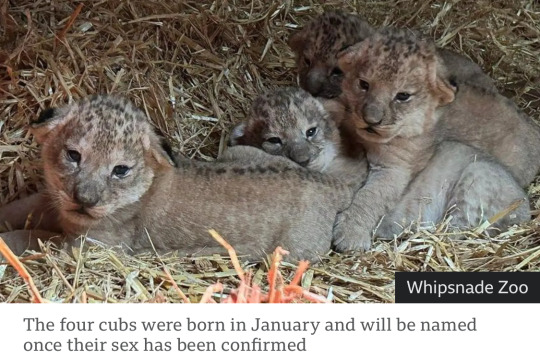
“The litter of rare northern African lions was the second batch to be born recently at Whipsnade Zoo in Bedfordshire, after three arrived in November. […] "The youngsters will grow up side-by-side with their half-siblings, and I'm sure they'll love having an abundance of playmates."”
2. Ohio Appeals Court Rules Trans Care Is Healthcare, Strikes Down Ban For Trans Youth
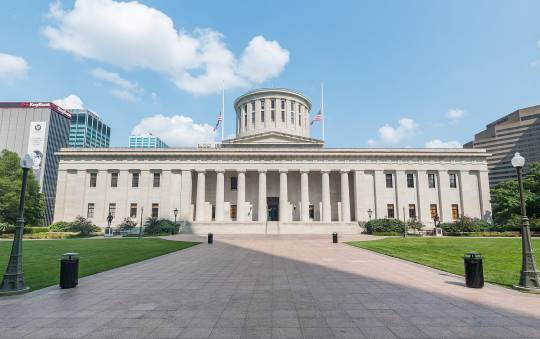
“The ruling rested on two key findings: first, that gender-affirming care constitutes legitimate medical treatment, and second, that parents have the constitutional right to make healthcare decisions for their children.”
3. Oystercatcher Recovery Campaign Offers a Rare Success Story about Shorebird Conservation

“Fifteen years of coordinated conservation efforts have produced a significant recovery in the U.S. population of the American oystercatcher[….] Schulte predicted that the protection efforts will survive [federal funding cuts] because of the large number of non-federal partners involved.”
4. Fish-tracking robot aims to make fishing more sustainable in developing nations

“A solar-powered, transparent [robot] that can roam the waters autonomously for five days at a stretch, counting fish [… can help fishers] avoid the overfishing [… and] mean less fuel consumed by boats searching for schools of fish, and less degradation of nets due to trawling where there are no fish.”
5. Zoologist Rediscovers Grasshopper Species Believed Extinct
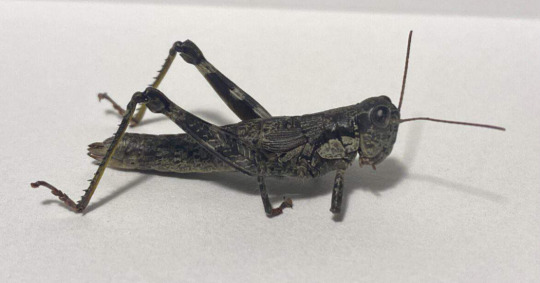
“[… T]he Appalachian grasshopper […] camouflages with its surroundings—perhaps part of the reason people haven’t seen it [since 1946]. [… A zoologist] had seen some reports on iNaturalist that he thought could have been the species[, …] and after surveying several locations, he found a female.”
6. Scaling agroforestry can support fisheries, local food production and cultural practices

“The research found that combining native forest protection (100,000 acres) with transitioning suitable fallow agricultural land to agroforestry (400,000 acres) could [reduce] erosion and boosting nearshore food production by almost 100,000 meals per year[….]”
7. A cell pulls off one of the 'Holy Grails' of biotechnology
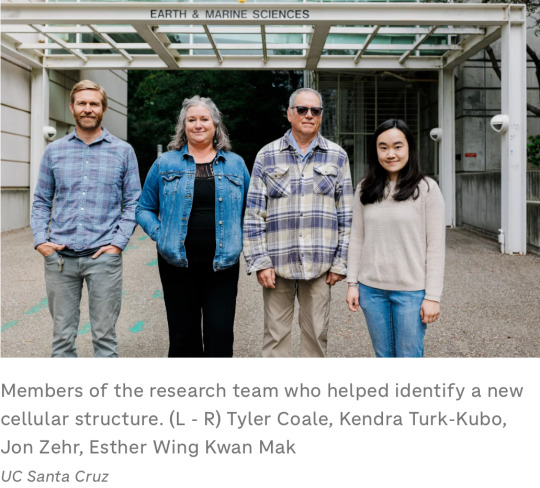
“[… A] single-celled alga with a nucleus [… can conduct] a chemical conversion reaction that helps create some of the essential building blocks of life. […] One day, Capone says the nitroplast could be introduced to crops to allow them to convert their own nitrogen without relying on external fertilizer.”
8. FERC: Solar + wind set for a strong 3-year run despite Trump’s sabotage

“Solar accounted for 68.2% of all new generating capacity placed into service in January – more than double the solar capacity added a year earlier (1,176 MW). […] Around 30% of US solar capacity is in small-scale (e.g., rooftop) systems that are not reflected in FERC’s data.”
9. As ghost junk haunts the sea, ‘mermaids’ are fighting back

“Just two days after completing the training, Diana Garcia, one of the Sirenas, helped remove nearly 900 kilograms (2,000 pounds) of [abandoned] ghost gear and debris in the waters near her community[….]”
10. A Nest-Protecting Program Pays Off for Alabama’s Snowy Plovers

“Over the past two breeding seasons, 18 Snowy Plover chicks fledged—a major turnaround after five years of almost no chick survival. [… The team made] a concerted effort to educate the public about the need to give the birds space[, … and] people have not directly caused plover losses in Alabama recently[….]”
March 8-14 news here | (all credit for images and written material can be found at the source linked; I don’t claim credit for anything but curating.)
#hopepunk#good news#nature#zoo#lion#baby animals#us politics#ohio#trans rights#trans healthcare#healthcare#birds#conservation#fishing#sustainability#grasshopper#insect#extinction#inaturalist#agroforestry#hawai'i#hawaii#biotechnology#algae#symbiosis#nitrogen fixation#solar#solar energy#solar power#endangered species
722 notes
·
View notes
Text
Fish of the Day
Today's fish of the day is the Alabama Cavefish!
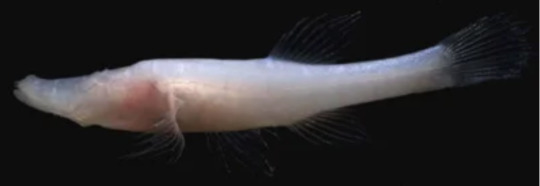
The Alabama Cavefish, scientific name Speoplatyrhinus poulsoni, is known for being one of the rarest troglobitic fish species in North America. Discovered in 1967, by the time the alabama cavefish was scientifically described in 1974, there were only about 100 fish left. On any visit to the cave, only about 10 fish have ever been seen, but they are consistently different fish, so the estimated number is a little under 100, making them critically endangered. This also makes them a possibility for the rarest cavefish in North America!

Despite the large waterways connecting caves in Key Cave National park to several other cave systems, the Alabama cavefish has restricted itself to only one cave for reasons we don't understand. A search of over 120 caves in the surrounding area revealed no populations or signs of populations. With a range consisting only of Key cave in Lauderdale county, Alabama; these fish are constantly faced by the threat of extinction, and most of their worries are based on the limited home range, and waters entering the cave. Any water with chemicals, especially fertilizers and other agricultural runoff are a large concern. That along with competition from more aggressive cavefish, and predation from nearby crawfish. Due to their living situation and delicate population, much is unknown about these fish. But, let us go over what we do know!

The diet of the Alabama cavefish consists mostly of invertebrates found in the caves: copepods, isopods, smaller cavefish, spiders, beetles, and anything else it can find that will fit in its mouth. They grow up to a size of 2-3 inches in length. They have no eyes or pigment, and hunt solely based off of sensory protrusions that dot the head and sides, a trait evolved to handle the almost complete darkness. These fish have no breeding season, and instead breed based off of the environmental signal: when the caves flood in the winter and spring. Insufficient flooding can lead to years where no breeding or spawning occurs, and when it does females carry few eggs, and even fewer eggs hatch. Their lifespans, based off of the lifespan of Northern cavefish, are an estimated 5-10 years.

#fish#fish of the day#fishblr#fishposting#aquatic biology#marine biology#freshwater#freshwater fish#animal facts#animal#animals#fishes#informative#education#aquatic#aquatic life#nature#river#ocean#alabama cavefish#cavefish#cave fish#Speoplatyrhinus poulsoni
786 notes
·
View notes
Text




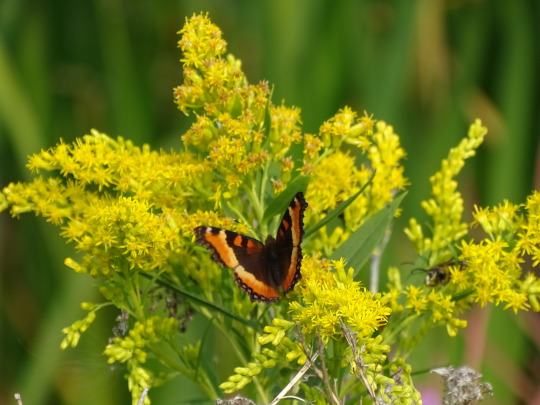
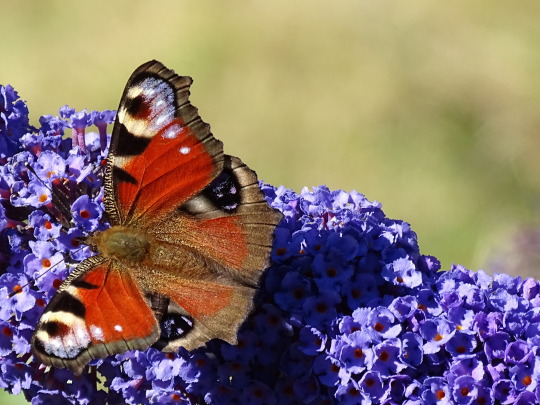
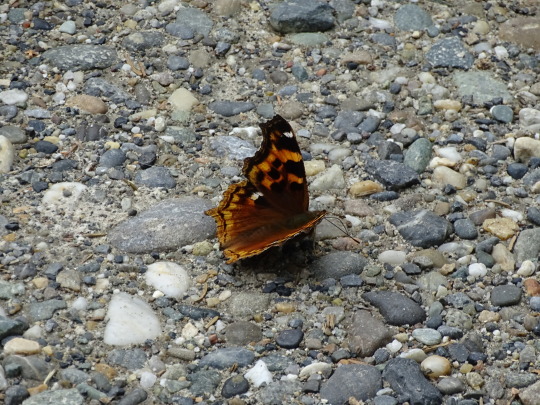









National Butterfly and Hummingbird Day
National Butterfly and Hummingbird Day celebrates these small, flying beings, and is for appreciating them, learning about them, spreading awareness about them, and viewing them in person.
There are about 20,000 species of butterflies—some sources say there are 17,500, while some say there are as many 24,000. There are about 750 species found in the United States, where the white cabbage butterfly is the most prevalent. The life cycle of a butterfly begins when eggs are laid on leaves, which hatch into larvae known as caterpillars. They eat the leaves and flowers of the plant they are on, and grow in size while shedding their skin multiple times. They then turn into a pupa, or chrysalis, and then into a butterfly.
When they come out of their cocoon to a new world as a butterfly, they have to pump fluid into the veins in their wings in order to expand them. They then have to rest for a few hours before taking flight for the first time. Butterflies are cold blooded, and the air around them affects their ability to function. If the air temperature gets below 55 degrees, their body temperature may drop too low to be able to fly. To remedy this, they may warm up their muscles by shivering or by lounging in the sun. They fly best in air temperatures between 82 and 100 degrees and are most comfortable when their body temperature is at about 85 degrees.
Their wings have thousands of scales that reflect light, giving them color. But underneath their scales, their wings are actually transparent. To protect themselves from predators, some butterflies fold their wings in to help camouflage themselves, or, conversely, some have bright colors that reveal to others their presence. Some predators are aware that many bright-colored insects are toxic when eaten, so they avoid these butterflies, even though, unbeknownst to them, they aren't poisonous. The common buckeye butterfly uses its colors to scare off birds.
Butterflies have receptors on their feet, which help them find host plants and food. Female butterflies tap on leaves until juices come out, and chemoreceptors on their legs tell them if the plants have the right type of chemicals to lay eggs on. Butterflies also step on their food to taste it. Adult butterflies only eat liquid, which is usually nectar, although they occasionally drink from mud puddles as well, to gain minerals and salts. They eat with a proboscis, which is like a straw; it is curled up under their chins and unfurls when they eat.
Butterflies generally have short lives, with most only living for two to four weeks, during which they mainly eat and mate. Some butterflies only live a few days, while some that migrate, like monarchs and morning cloaks, may live about nine months. Monarchs may travel over 2,500 miles to find warmth during the colder months.
The second flying creature celebrated today is the hummingbird. There are about 325 species of hummingbirds, but only eight of them regularly breed in the United States. Although, up to two dozen species can be found there at various times. Most species of hummingbirds can be found in South America, Central America, and the Caribbean, and there are no hummingbirds outside of the Western Hemisphere. Many species can breed together, which creates hybrid species.
Hummingbirds are very small—many weigh less than the weight of a nickel. The calliope hummingbird is 3 inches long, and the bee hummingbird, native to Cuba, is the smallest bird species in the world, at 2.25 inches in length. Hummingbirds have such small feet that they can't walk or hop properly. They can shuffle a bit, though, but their feet are mainly used for preening. The small size of their feet also allows them to fly quicker. They can fly up to 30 miles per hour when going forward, and up to 60 miles per hour when diving.
Each species of hummingbird makes a different humming sound because the wings of each species beats at a different rate. Generally, a hummingbird's wings beat somewhere between 50 and 200 times a second. Wings aren't the only things that beat quickly when it comes to hummingbirds: their hearts beat more than 1,200 times a minute. They also take a breath about 250 times a minute, and that number is even higher when they are flying.
Like butterflies, hummingbirds may fly hundreds or even thousands of miles to migrate. They mainly eat nectar, but also eat small insects, spiders, tree sap, and juice from fruit. Their lifespan ranges from 3 to 12 years and is contingent on factors such as their species, habitat, and vulnerability due to predators and other threats. On National Butterfly and Hummingbird Day, we remember and celebrate both of these animals.
National Butterfly and Hummingbird Day is being observed today! It has always been observed annually on October 3rd.
Source
#Milbert's tortoiseshell#USA#Canada#summer 2023#travel#original photography#vacation#Red-spotted Purple Admiral Butterfly#National Butterfly and Hummingbird Day#NationalButterflyandHummingbirdDay#3 October#insect#wildlife#summer 2019#flora#fauna#flower#Monarch Butterfly#Painted Lady Butterfly#Papilio glaucus#Eastern Tiger Swallowtail#Black Swallowtail#2009#Giant Swallowtail#Alabama#Pennsylvania#Indiana#Sweden
4 notes
·
View notes
Video
youtube
Why Trump Is Partnering With Christian Nationalists
Donald Trump is portraying himself as a religious savior. He says Election Day will be: …”the most important day in the history of our country, and it’s going to be Christian Visibility Day.”
Trump has repeatedly compared his criminal trials to the crucifixion of Jesus, promoted videos calling his reelection “the most important moment in human history,” and that describe him as a divinely appointed ruler.
He claims to be a holy warrior against an imaginary attack on Christianity.
TRUMP: They want to tear down crosses//But no one will be touching the cross of Christ under the Trump administration. I swear to you.
He’s even selling his own version of the Bible.
Trump is playing to a rising white Christian Nationalist movement within the Republican Party.
Christian Nationalists believe that the law of the land is not the Constitution, but instead the law of God as they interpret it. Under this view, atheists and people of other faiths (including Christians of other denominations) are all second-class citizens.
Trump’s supporters are increasingly overt in their calls to replace democracy with a MAGA theocracy.
The idea that the will of voters is irrelevant because God has anointed Trump was a recurring message in the efforts to overturn the 2020 election.
In previous videos, I’ve highlighted how MAGA Republicans have embraced core elements of fascism. They reject democracy, stoke fear of immigrants and minorities, embrace a gender and ethnic hierarchy, and look to a strongman to lead and defend them.
The combination of fascism and Christian Nationalism is called Christofascism, a term first used half a century ago by the theologian Dorothee Sölle. Fascists rise to power by characterizing their opponents as subhuman. Christofascists take it a step further by casting opponents as not just subhuman, but actually demonic.
Framing opponents as enemies of God makes violence against them not only seem justifiable, but divinely sanctioned, and almost inevitable.
Christofascists want to strip away a wide range of rights Americans take for granted. Former Trump staffers involved in developing plans for a second Trump term have called for imposing ��Biblical” tests on immigration, overturning marriage equality, and restricting contraception.
And MAGA-aligned judges are already setting their dogma ahead of the Constitution. In his concurring opinion on the case that declared frozen embryos are people, Alabama Supreme Court Justice Tom Parker cited God more than forty times and quoted the Book of Genesis and other religious texts.
Nothing could be more un-American than the Christian Nationalist vision. So many of America’s founders came here as refugees seeking religious freedom. The framers of the Constitution were adamant that religion had no role in our government. The words “God,” “Jesus,” and “Christ,” don’t appear anywhere in the Constitution. And the very first words of the Bill of Rights are a promise that “Congress shall make no law respecting an establishment of religion, or prohibiting the free exercise thereof.”
Christofascism, or any religion-based form of government, is a rejection of everything America has aspired to be — a secular, multi-racial society whose inhabitants have come from everywhere, bound together by a faith in equal opportunity, democracy, and the rule of law.
Beware.
504 notes
·
View notes
Text
As of Monday afternoon the wildfires in California had consumed over 36,000 acres leaving a death toll of 24. When asked in an interview regarding funding for disaster relief, Alabama senator Tommy Tubervill said this “We shouldn’t be [funding California]. They got 30 million people in that state they vote in these imbeciles in to office” former collage football coach and by far the dumbest senator continued, “you go in to California you run in to a lot of Republicans, a lot of good people and I hate it for them. But they are just overwhelmed by these inner city woke policies with people who vote for them. Those people don’t deserve anything unless they show that they’re going to make some changes”.
Notwithstanding the not so subtle racism of ‘inner city woke’ comment, exactly what is the senator from the state ranked 44th out of 50 for living standards, health, education, opportunity, natural environment, ect, saying?
Alabama’s GDP grosses $300 billion, with a population of a little over 5.1 million people, they are the 14th highest recipient of federal welfare assistance, they are 45th in education and 44th in overall health. Over 360,000 residents receive rental assistance and nutritional assistance.
Yes. California ranks number one for dollar amount federal assistance. Although upon further analysis the percentages are far less unbalanced as the numbers would suggest.
California is the WORLDS 5th largest economy, grossing $3,862 billion annually, with a population of nearly 40 million. That is over 10 times the annual revenue Alabama takes in, with almost 10 times the population as well.
Does California have its share of difficult circumstances it deals with, with some questionable solutions to do so? Yes. Yet seeing as it’s the top contributor to federal tax revenue they obviously are functioning beyond the norm.
Overall the states that fund this nation the most are, California, New York, New Jersey, Texas, Pennsylvania and Florida. States such as the Dakotas, Wyoming, Mississippi, Kentucky, and yes, Alabama, contribute a dismal amount in contrast.
Let’s look back to late summer of last year. When two hurricanes devastated the the lower southeastern states, Helene causing monumental destruction and incredible loss of life. Did the Biden administration use these disasters as a political tool? Did he suggest that they shouldn’t get funding until they remedy their bigoted, unconstitutional voter suppression and gerrymandering? No. He said that the United States government is here for you. While right wing politicians and media plastered the victims with false statements and misinformation, confusing and misleading the afflicted Americans, FEMA and the Biden administration begged the survivors to reach out for help. The politically motivated lies even spurred FEMA to create a specific website combating the false claims and offering assistance.
There’s the old saying, Rome wasn’t made in a day, the recovery from these massive events unfortunately takes time also. Yet NEVER did Democrats or Biden lead folks astray, exploit their vulnerability, or abandon them. I know, I reside in a county that was declared a disaster area after Helene. The federal response was quick, and thorough.
What did the right do? Lie. Mislead. Frighten. Contrive a self serving narrative. Enrage those impacted and scrambling to piece their lives back together.
The void of compassion, the insufficiency of truth, the lack of maturity from much of the right is astounding. When did we begin using the suffering of Americans as a tool to advance your political agenda? When did it become the status quo to segregate assistance to only those who align with your political views? What was the moment when helping your fellow American out in a time of need was tethered to conditions?
In my just over 40 years on this earth I’ve seen the GOP go from being a party of fiscal responsibility, “Christian family values”, the party of law and order, and the party of high moral standards, to now where over a quarter of the current deficit was created in one Republican presidential term, a party of nominating, elected and confirming sexual assailants and predators (not just Trump), a party that not only backs and supports a felonious insurrectionist, but tiptoes, if not flat out violates the Constitution and rule of law, and a party that has no self awareness of its own misgivings.
Personally. I want leaders who are far more intelligent and far more qualified than me to be in charge. I want leaders who harbor self restraint and possess an extraordinary sense of moral fortitude. I want leaders with grace and maturity running the various aspects of this country. I want leaders who care and hold reverence to their values and to the oath of office they swear to.
Can we go back to a time where those who represent us were adults? Can we go back to a time where government was beholden to you as an American citizen regardless if you reside in a blue state or red state? Can we go back to a time where leadership wasn’t a popularity, tribalist, culture war crusade?
We are all humans. We all feel pain. We all feel joy. We all bleed red. Most importantly we are all citizens of the United States of America, key word united.
This shouldn’t be this hard. It shouldn’t be this controversial or complicated. We are one nation, we all want to see it flourish. We all do better when we are all doing better.
So please! Let’s return to decency. To compassion. To respect. To some mild form of social adhesion.
#california#california wildfires#fema#decency#war on democracy#democracy#trump is a threat to democracy#united states#United#traitor trump#republicans#donald trump#politics#news#compassion#help#democrats#togetherness#the left#liberal#hope#u.s. house of representatives#truth#trump circus#freedom#free speech#vote democrat#we the people#pride#trump is a russian asset
92 notes
·
View notes
Video
Good Morning, Mount Whitney by Mark Stevens Via Flickr: While taking in view around the Face of the Alabama Hills with a view looking to the west across a desert landscape and then hillside of eroded rock formations. This is in the Alabama Hills National Scenic Area. The backdrop of mountains is part of the Mount Whitney Group range of the Sierra Nevada mountains. Lone Pine Peak is probably the most recognizable one in the image middle, just left of center. Mount Whitney is middle, right of center and appears more distant.
#Alabama Hills#Alabama Hills National Scenic Area#Azimuth 263#Blue Skies#California and Oregon Road Trip#Candlelight Peak#Canvas#Day 2#Desert#Desert Landscape#Desert Mountain Landscape#Desert Plant Life#DxO PhotoLab 5 Edited#Erosion#Hillsides#Inyo National Forest#Landscape#Landscape - Scenery#Lone Pine Peak#Looking West#Mount Carillon#Mount Whitney#Mount Whitney Group#Mountain Peak#Mountains#Mountains in Distance#Mountains off in Distance#Mountainside#Nature#Nikon D850
2 notes
·
View notes
Text
Kendrick, Drake, and Ethnic/Cultural Identity
One of the most discussed topics during this exchange between the two is if Drake is a culture vulture. In short, yes. He's always been. It boils down to inherited cultural identity and respected history, not the upholding of a social construct of “race.”
Race is a goofy non-biological caste system that operates in various countries and it’s a dumbass global push to get people to embrace a superior to inferior hierarchy in classifying the globe into 5 broad groups solely based on perceived skull sizes, hues of skin color, and perceived traits and phenotypic features via the teachings of François Bernier, Johann Blumenbach, Carl Linnaeus, and them other hoes. Get race tf outta here.
I’m gonna make this concise as possible, but fleshed out a bit for full understanding.
Kendrick Lamar is Black American on both sides with his roots most likely coming out of Mississippi and/or Alabama to Chicago to Cali by way of the Great Migration. (He may even descend from Duckworths from Louisiana). I haven’t done his genealogy, but now I may out of curiosity.
Black American is a double ethnicity. We’re citizens of America (nationality = US Citizen), and our ethnic group (Black) was created & descends from this land (ethnicity = American) through ethnogensis. It has nothing to do with one’s brown skin color or how the cops see us 🙃, but everything to do with the lineage of one’s parents and their parents, etc. (For info on lineage tracing, refer to my post here.)
Black Americans are an ethnic group (the largest from this land and largest in this country after Germans), while “white Americans” are a self-identification race to remove ethnic identity and conflate numbers. I can break this down further in another post if y’all want since American history is complex and will explain why Black Americans have been reclassified seven times by the US government 🙃.
Now.
Culture is largely passed down through your mother, and her mother, and her mother, and so forth for Black Americans (and I’m sure other ethnic groups). No matter if it’s a two-parent or single-parent household, she’s your ultimate teacher in setting the foundation of your cultural upbringing. It’s the same if one is raised by their grandparents. It largely stems from the grandmother. If one’s father is their main parent, that’s a different case of course.
Drake falls in line with this as someone from a single-parent household. He is half Ashkenazi of Latvian and Russian descent (ethnicity) through his mother and of half Black American descent (ethnicity) through his father. He is a dual citizen of Canada and America (nationality), who was raised in Canada with his Ashkenazi Jewish mother and Ashkenazi relatives with an Ashkenazi upbringing. He went to a Jewish day school and was engulfed in all aspects at home.
Kendrick is ethnically and culturally Black American. Drake is ethnically and culturally Ashkenazi. He is also ethnically Black American (through lineage), but not culturally Black American. Does that make Drake a culture vulture? No. He just didn’t have the cultural upbringing but could always immerse himself in learning, appreciating, and respecting the other half of his history and culture.
What makes him one is how he operates as an outsider. He participates in an aspect of Black American culture (Hip-Hop) for his monetary gain, adopts a manufactured image for his perception of believability, and disrespects the people of this culture. “…run to America to imitate culture.” It’s like a jacket to him. He takes it off to try on another (like a Jamaican accent) and swaps for another, etc.
A few examples that’s been touched on: He blackened his face to depict blackface while wearing a Jim Crow t-shirt… That’s specific disrespect towards Black Americans, mocking our history and our ancestors. “Whipped and chained you like American slaves.” That’s specific disrespect towards Black Americans, mocking our history and our ancestors. “[You] always rappin' like you 'bout to get the slaves freed.” Do I even need to explain this? Hopefully it’s understood.
The muthafucka is not like us.
365 notes
·
View notes
